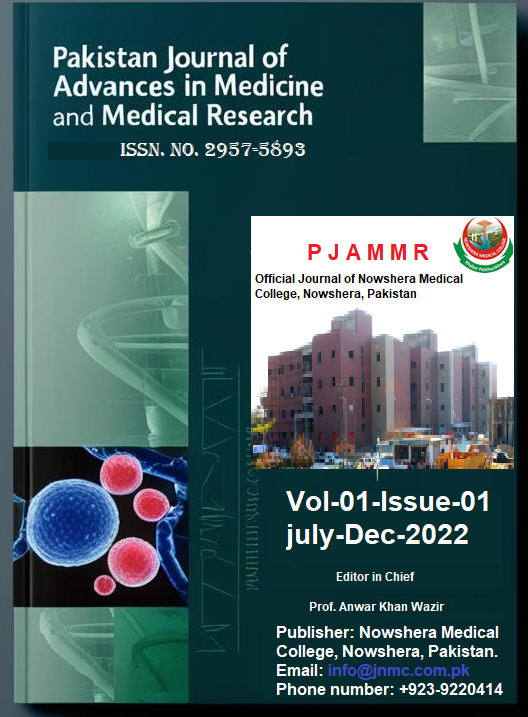Migraine Associated Vertigo in Children and Teenagers Epidemiology and Treatment .
Original Article
DOI:
https://doi.org/10.69837/pjammr.v1i01.5Abstract
Objective: to describe the symptoms and outcome of vertigo in a paediatric population. Patients. The study included all children and teenagers who presented with dizziness in the otoneurology.
Study design: A Retrospective Observational Study
Place And Duration Of Study: From 02 jan 2014 to 02 jan 2021 In The department of ENT KTH Hospital Peshawar
Material And Methods: This study was carried out between 2014 and 2021 in the ENT KTH hospital in Peshawar. Children under the age of 13 who had normal otoscopy, at least one dizziness attack, and no prior neurological evaluation were included in the research. Children who have severe otitis media or otitis media with fluid experience dizziness. The current research concentrated on kids and teenagers who experienced dizziness despite having acceptable orthoscopic findings. Using SPSS 24.0 the sample number was determined.
Results: Out of 74 patients with ages averaging 10.5 years, partook in the investigation. Table 1 illustrates the profiles and clinical signs of these individuals. Remarkably, four patients showed location nystagmus, five had post-head-shaking nystagmus, and ten tested positive on the head impulse test. Spontaneous nystagmus occurred in 30% of the sample. Fifty-four reported using English as their primary language. Twenty-three children completed the research, with an 18% dropout rate. Notably, as per Jongkees' equation, 68% of ENG patients manifested aberrant caloric examination results.
classified as canal paresis exceeding 26% or orientation preponderance over 30%. Additionally, aberrant spatial nystagmus appeared in six cases. The research uncovered an assorted range of causes for vertigo in youngsters, with comparable symptomatic demonstrations. The outcomes differed depending on the aetiology, underscoring the significance of tailored analysis, treatment, and follow-up care. Collaborative efforts with medical professionals are absolutely crucial for accurate diagnosis and effective remedial approaches, minimising the necessity for unnecessary laboratory testing.
Conclusion: Numerous causes of vertigo in children may manifest similar symptoms. Hospitals And Clinical Results Vary Based On Etiology In each case, the diagnosis should direct treatment and follow-up. Close coordination with medical professionals is frequently required to get the right diagnosis and treatment without undergoing unnecessary lab testing.
Keywords: Vertigo, Children, Teenagers, Epidemiology, Treatment
Downloads
Published
How to Cite
Issue
Section
License
Copyright (c) 2022 Pakistan journal of Advances in Medicine and Medical Research

This work is licensed under a Creative Commons Attribution-NonCommercial 4.0 International License.






